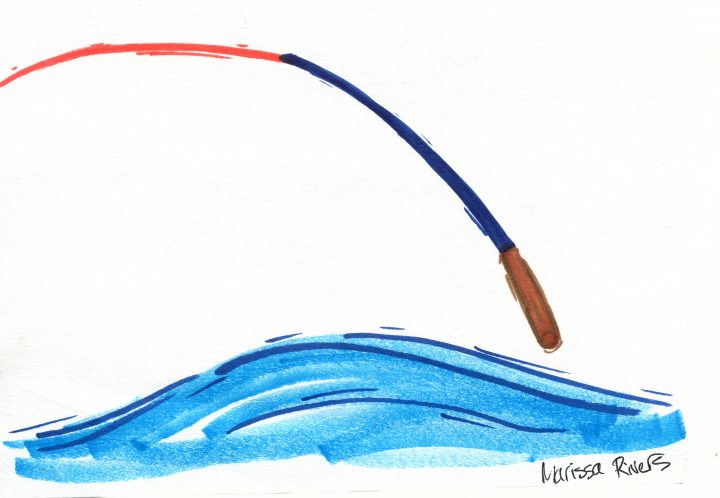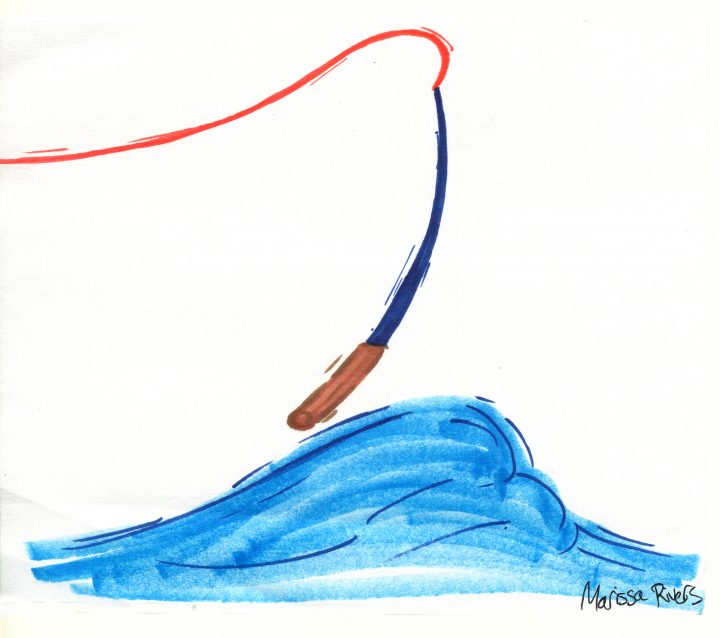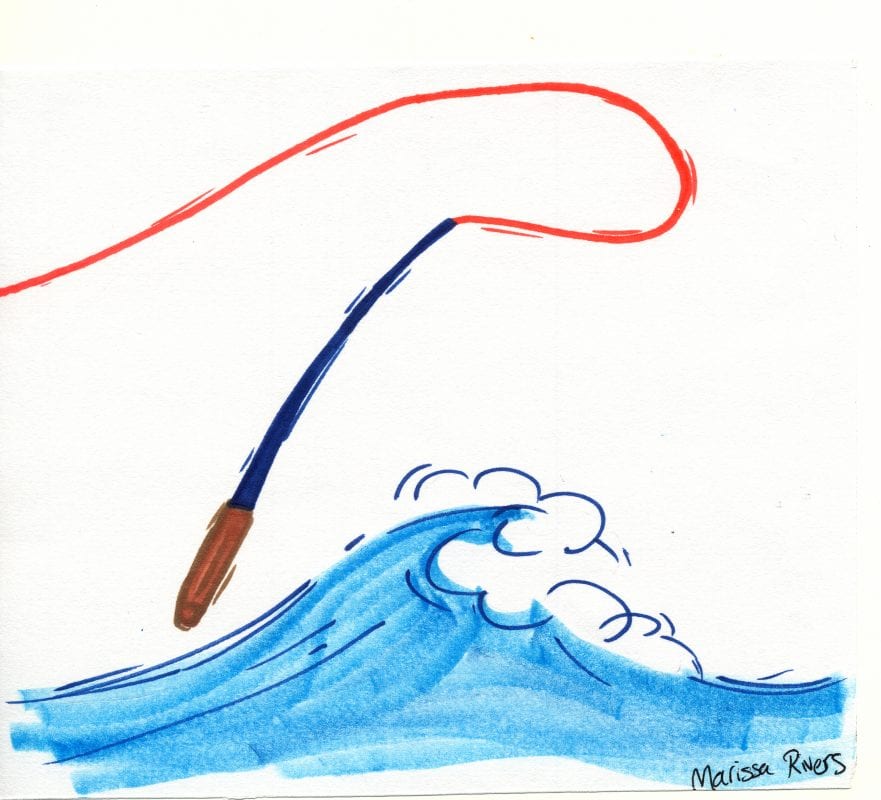Illustrations by: Marissa Rivers
Rather than paddling out to the deep ocean, surfers ride their waves at the beach. That is where solid shoals turn moving swells of salt water into rolling waves. Fly fishers can improve their cast by considering the release of power in those waves.

A swell of water can be blown across the ocean forever without a solid shoal to turn it into a wave. Similarly, a fly caster can move their hand, bend their wrist and even take off running, but they will create only a flowing ribbon of fly line. It is the shoal like action of the stopped rod hand that converts the power in the bent rod into the rolling cast we all love. As fly casters, our rod hand is both the wave and the shoal.
However, for a length of time during their development, anglers see the rod hand as moving in a backward and forward arch, like a never-ending, half-hearted punch. In the same way that the beach comber learns about the shoal under the breaking waves by bobbing into the surf, through instruction or long trial and error, the caster needs to realize that the rod hand must stop instantaneously, allowing the fly line to break over that stationary shoal. The caster’s rod hand and forearm change instantly from being the bottom of the ocean swell to being a stationary tripping point. The fly rod is the middle of the wave with a mass of moving saltwater and the fly line is the water at the top of the wave.

Over the long run, realizing that the stop is the final key to the basic fly cast empowers the caster by giving them the tool to release ever-increasing power. In the same way a swell of salt water that travels further across the ocean has more time to build its power, a fly caster can reach behind their body, after stopping the back cast instantly, in order to accelerate the rod and fly line over a longer fetch. When properly released over a stationary rod hand, the resulting cast will release that increased power. In his 1959 text on casting, A Fly Fisher’s Life, Charles Ritz explains that this extra power means not only extra length but also a softer landing of the fly when the fly line is allowed to slide out through the line hand.

Watching ocean swells break into waves on the shore, the angler can see an image of the rod hand and entire rod from butt to tip flowing then breaking as a connected whole. The angler’s rod hand is both the bottom of their own swelling wave and the stopping shoal that creates a flowing wave. To end the wristy rainbow, fly casters would do well to spend time at the beach with those surfers.
